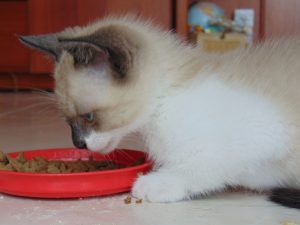
Living with a cat is a very important decision and it can be a great happiness and a wonderful experience. Many people decide that, to improve the quality of life of their pet, a good option is to sterilize it. In order to do this, you must be sure of your decision and you will need to pay special attention to the post-spaying process. If your decision is made, you will know that with this procedure you will basically avoid three situations: the first one, that the cat “marks” the house; the second one, that it escapes and the third one: that it can reproduce.
Coming Back Home
The first few days after surgery are when your cat will need your care the most. Your pet’s return home is the most important thing and, therefore, we must make it as comfortable as possible for him/her. For that to happen, there are a few things to consider and today, that’s exactly what we are going to uncover.
A Place to Rest
It is essential to give your cat the space she needs to rest. Although spaying and neutering your feline is very simple and does not require stitches, keep in mind that this is a surgical procedure and therefore it will take some days for your cat to fully recover. At this point, you should be attentive and try to prevent him from jumping on high surfaces, as well as place his food and drink in resting areas, easily accessible for him.
The Sandbox
Do the same with your sandbox. Of course, put it in a different place and away from its food, because you already know that cats are very careful animals and they don’t like to have their food near the place where they do their business.
Listen to Your Veterinarian’s Advice
Pay attention to the instructions your veterinarian gives you. He or she will give you guidelines for proper wound healing following the spay or neuter procedure. It is also important to place an isolation collar, so that your cat does not reach the operated area to lick it and thus prevent it from becoming infected.
There is one fundamental thing to keep in mind: if after 24 to 48 hours your cat does not eat as it usually does, consult your veterinarian. Also, if you are not using your sandbox as you normally did before the surgery, consult your veterinarian.
Bathing and Other Pets
Avoid bathing him, at least for the first ten days, to avoid infections in this area. If there are other animals in your home, and your cat usually interact with them, they could get hurt, try to prepare a room in your home so that he is quiet and can have his recovery.
As far as their diet is concerned, you should know that your pet’s metabolism slows down after sterilization, as the production of sex hormones decreases; therefore, their energy needs decrease by about 25%, but their appetite increases. You will also be less active, which can become a problem in terms of being overweight or obese. Don’t overlook this point: obesity is a very common problem in neutered cats.
The important thing here is to follow your veterinarian’s instructions. There is a special diet for neutered cats, which reduces the risk of such problems.
It is essential that you follow these guidelines, as well as the amounts that your veterinary professional tells you. This will contribute to your pet’s proper healing and full recovery in a faster and safer manner.
But also try to encourage your pet to exercise every day, chase a toy or do whatever you want. This will help it maintain its ideal weight.
Here you go! These will help you to make sure you help your cat fully recover after the sterilization process. Have you had any other pet sterilized before? Share your experience in the comments below.







